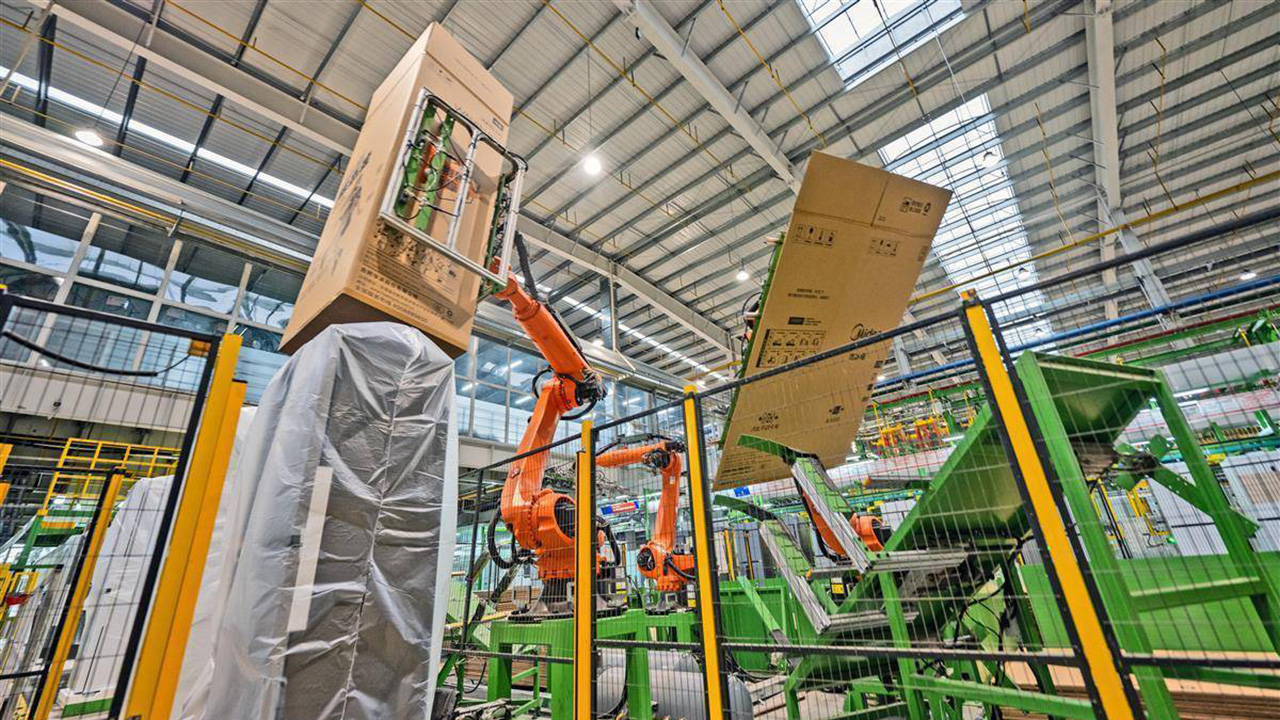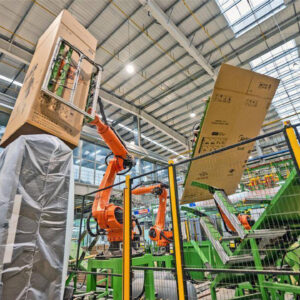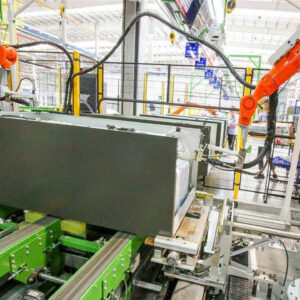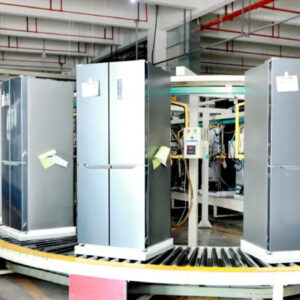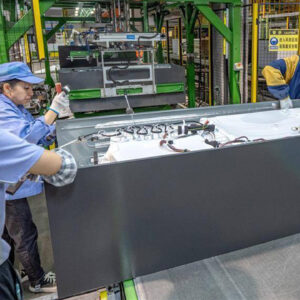Fridge Assembly Line Characteristics—Fridge Assembly Line Manufacturer in China
Description
We specialize in providing solutions for Fridge Assembly Lines/Production Lines.
Fridge Assembly Lines/Production Lines are Suitable to Assemble/Produce Fridges.(Welcome to contact us, we will suggest and design the suitable Assembly Lines/Production Lines for you.)

Characteristics of Fridge/Refrigerator Assembly Lines
The characteristics of refrigerator assembly lines can be summarized from aspects such as their operational mode, technological applications, and organizational structure. Here are the main features:
1. Process-Oriented and Sequential
Fixed-Sequence Operations:The assembly process follows a strict technological sequence, from cabinet forming, inner liner installation, foaming, door assembly, to final testing. Each step is interlinked, with workpieces moving sequentially along a predetermined route on conveyors.
Takt-Based Production:The line operates on a fixed “production takt time,” meaning each station must complete its operation within a set duration, ensuring a stable production rhythm and predictable output.
2. Specialization and Clear Division of Labor
Specialized Workstations: Each station is responsible for one or a few highly simplified assembly tasks (e.g., tightening specific screws, installing a particular component, applying labels). Workers repetitively perform skilled operations, enhancing efficiency and reducing errors.
Dedicated Tools and Equipment: Stations are equipped with specially designed tools, jigs, and testing devices (e.g., customized screwdrivers, vacuum lifters, leak detectors) to meet the specific assembly requirements of refrigerator components.
3. High Degree of Automation and Intelligence
Widespread Use of Automation: Key processes often utilize automated equipment, such as:
Robots/Manipulators: For handling heavy cabinets or doors, and performing precise sealing applications.
Automatic Foaming Machines: Precisely control the mixing and injection of chemicals to form uniform insulation layers.
Automatic Testing Equipment: Conduct inline performance tests (e.g., leak detection, electrical safety tests, cooling performance tests).
Data Collection and Monitoring: Modern lines integrate PLCs (Programmable Logic Controllers) and SCADA (Supervisory Control and Data Acquisition) systems to monitor production status, equipment parameters, and quality data in real-time, enabling visual management and rapid fault diagnosis.
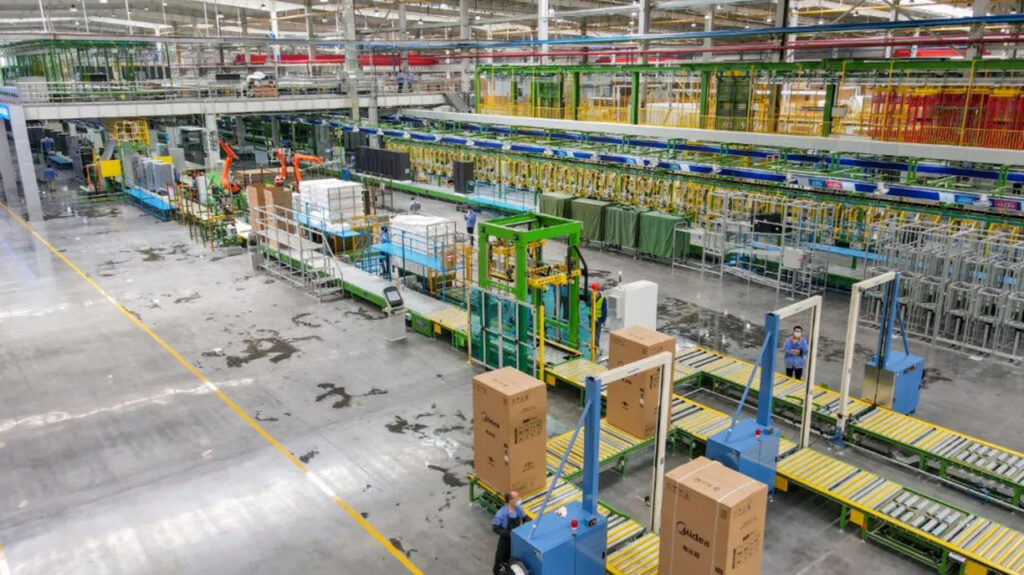
4. Strict Quality Control Embedded in the Process
Inline Inspection Stations: Quality checkpoints are placed after critical processes to promptly identify and remove defective units, preventing flaws from progressing and causing greater losses.
Traceability: Each refrigerator is tracked using barcodes or RFID, recording production data (e.g., component suppliers, production time, process parameters, inspectors) for full lifecycle quality traceability.
5. Precise and Synchronized Logistics
Line-Side Material Management: Lean logistics methods like “Kanban” or “Sequenced Delivery” are used to supply parts to stations just-in-time based on the production takt, reducing line-side inventory and time spent searching for materials.
Modular Feeding: Components like door shelves and drawers may be pre-assembled into modules before being delivered to the main assembly line, improving overall efficiency.
6. Flexibility and Reconfigurability
Adaptability for Mixed-Model Production:Modern lines are often flexible, allowing reprogramming of robots, changeover of fixtures, or adjustment of tooling to enable mixed production of different refrigerator models on the same line.
Ease of Expansion and Upgrades: Lines are often designed with future capacity increases or new model introductions in mind, featuring modular designs for easier expansion and reconfiguration.
